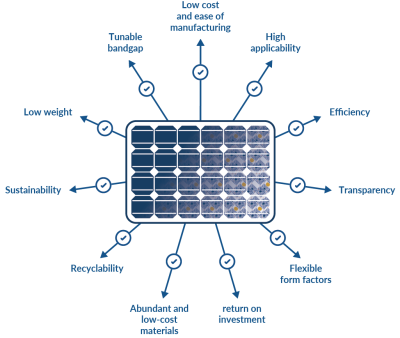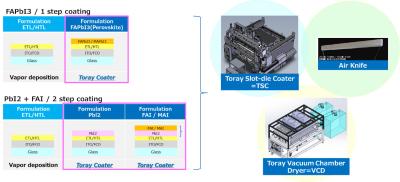Silicon-based solar cells currently dominate the solar market. It is a proven technology, with established manufacturing processes. However, it is also quite expensive to produce, yields rigid cells and has an estimated efficiency limit of around 29%. In recent years, perovskite-based solar technologies have been drawing a lot of attention, and many academics and companies believe they are the future of the solar industry.
Perovskite Solar Cell (PSC) technology is a photovoltaic (PV) technology based on the use of perovskite materials, mostly in the light-absorbing layers of the cell. There are many types of perovskite materials, and several processes used to deposit these materials to create efficient solar panels. PSCs have potential for creating solar panels that are easily deposited onto most surfaces, including flexible and textured ones. They can also be lightweight, cheap to produce, and more efficient than silicon-based solar cells (efficiencies in the lab have already crossed 30%).
The major advantages of perovskite-based solar cells are factors of performance, applicability and sustainability:






